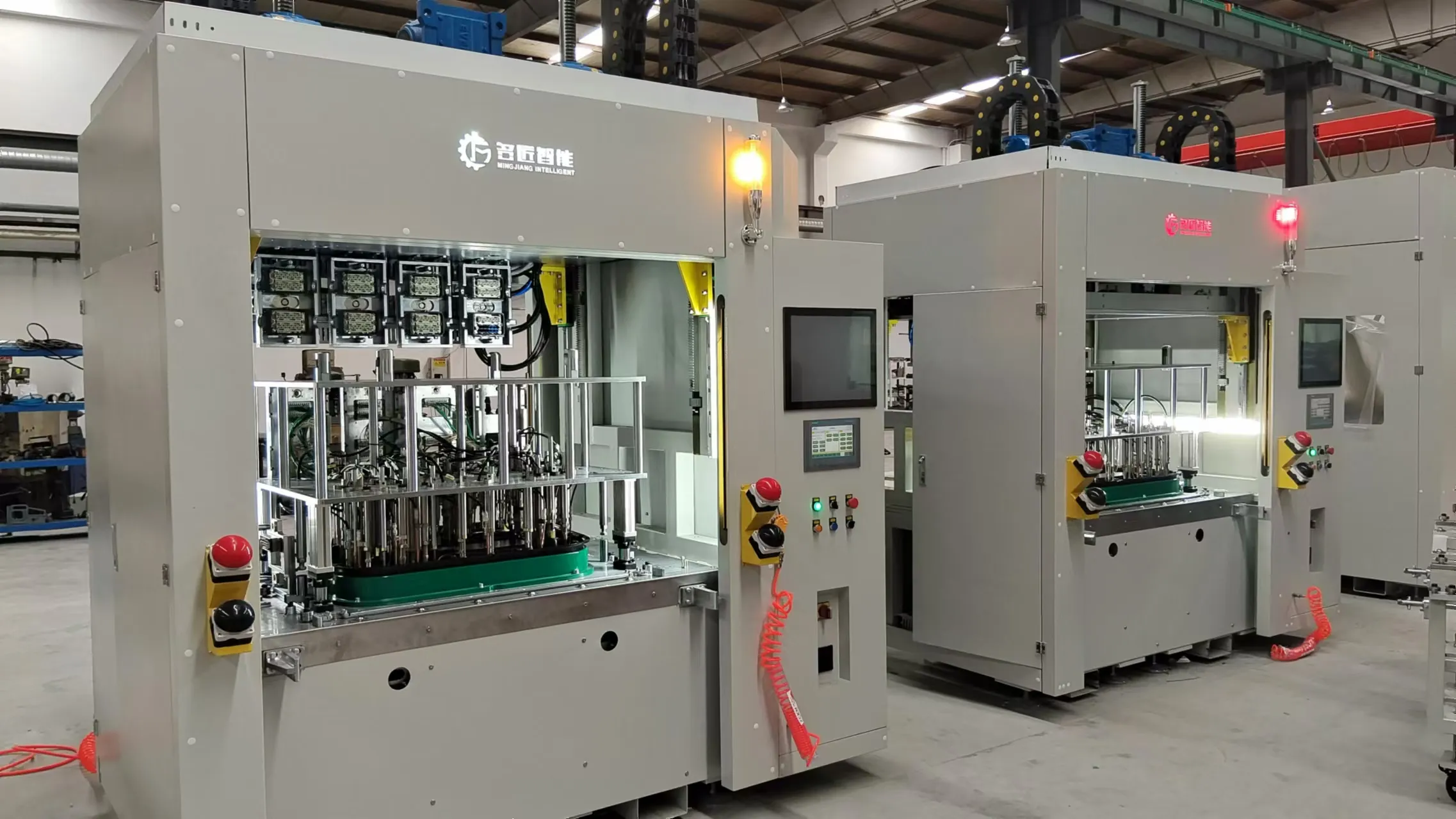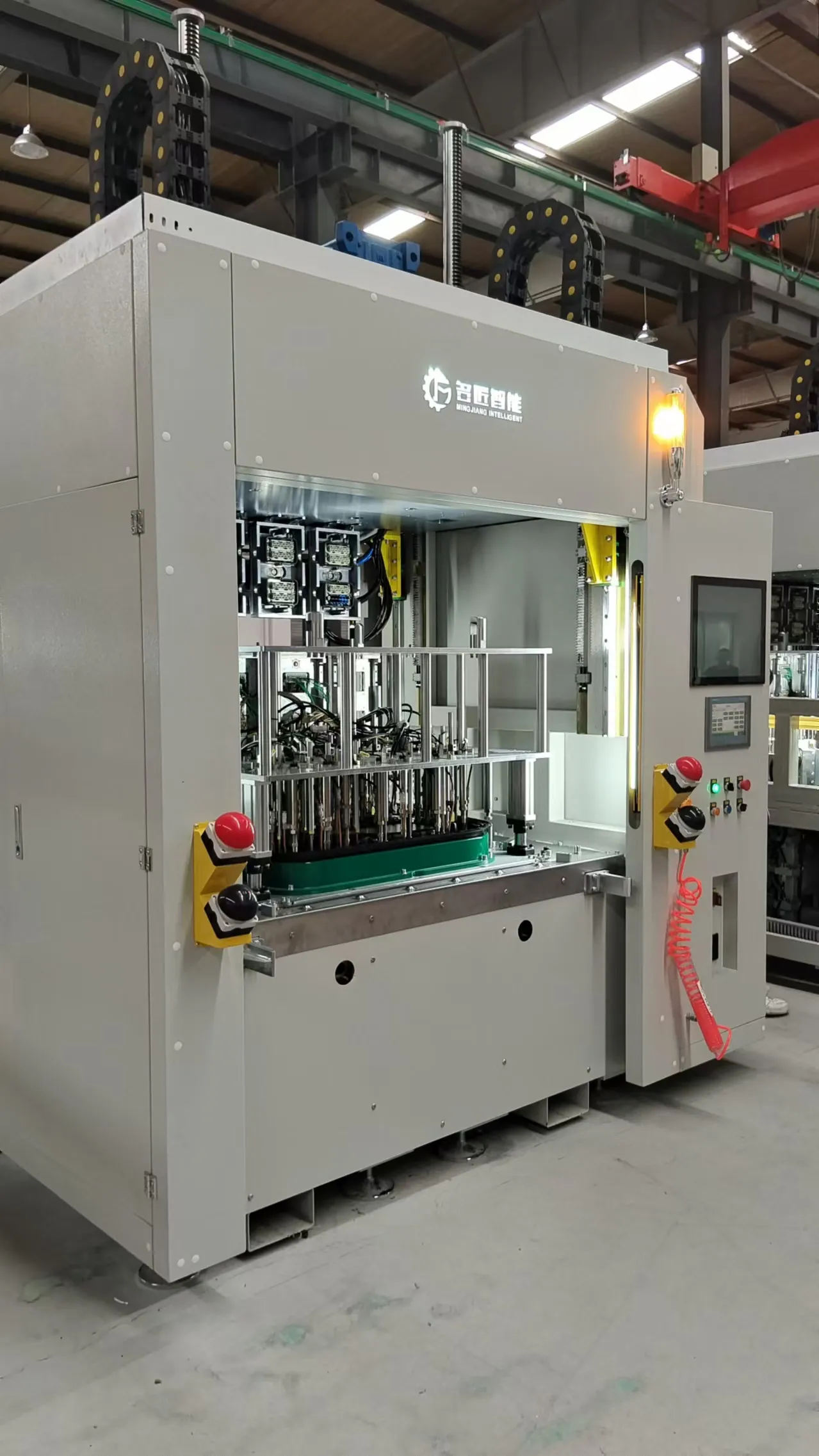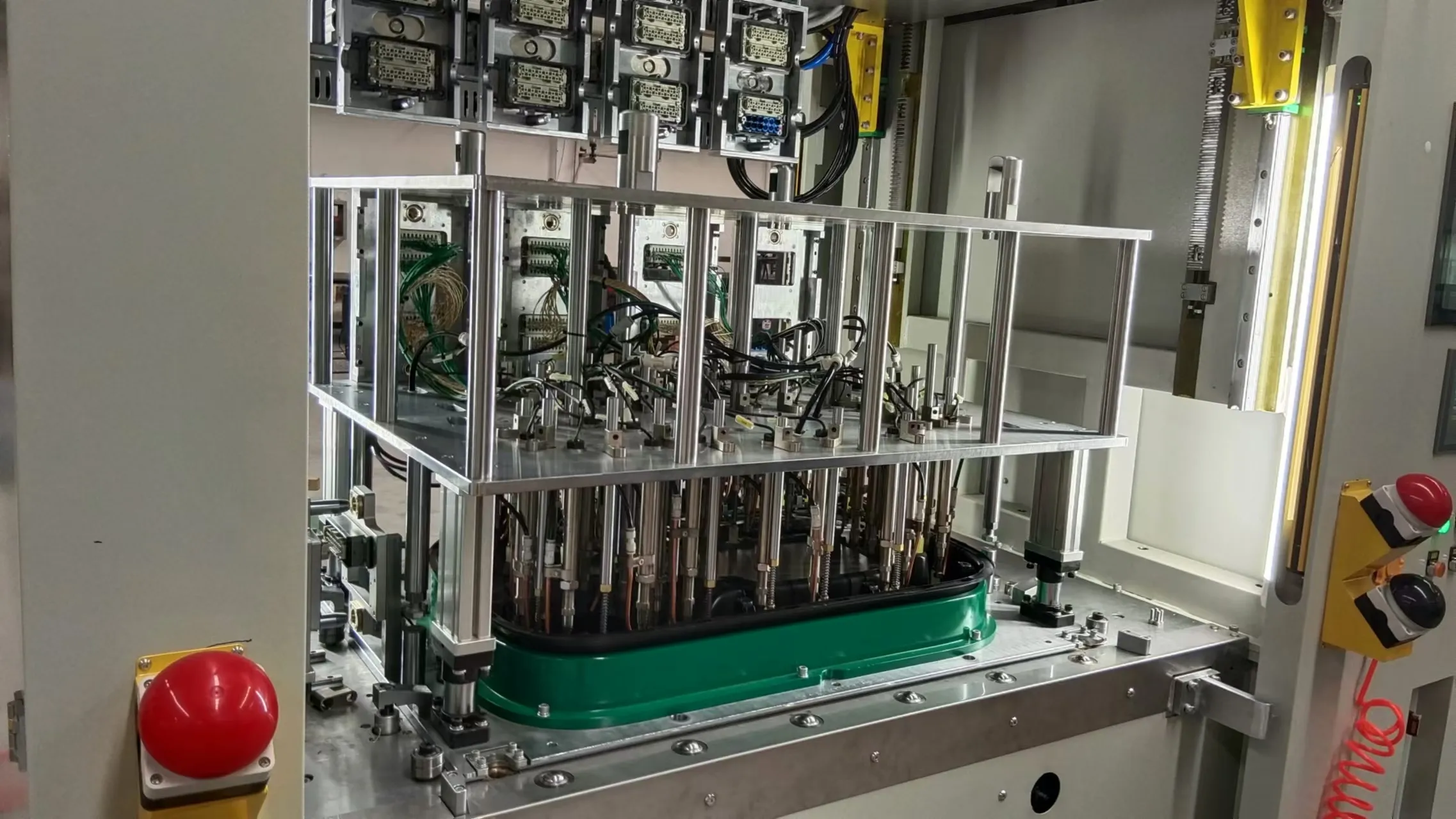
Welding heat staking equipment is a specialized tool that combines thermal energy and mechanical pressure to create strong, permanent bonds between materials, typically plastics and metals. Unlike traditional welding or mechanical fastening methods, this equipment uses controlled heat to soften target materials (often plastics) and then applies precise pressure to form a rigid, integrated joint. Its ability to bond dissimilar materials, reduce part complexity, and enhance production efficiency has made it a staple in various manufacturing industries. Below is a detailed exploration of its applications and core functions.
#Core Applications Across Industries
Welding heat staking equipment finds widespread use in sectors where durable, lightweight, and cost-effective bonding is critical. Here are its primary application areas:
##1. Automotive Manufacturing
In automotive production, heat staking is extensively used to assemble interior and exterior components. For example, dashboard panels often require bonding plastic trim pieces to metal frames; welding heat staking equipment softens the plastic, allowing it to flow into pre-drilled metal holes, then cools to form a secure, vibration-resistant joint. This method eliminates the need for screws or adhesives, reducing part weight and assembly time. Similarly, door panels, seat components, and electronic enclosures (e.g., for infotainment systems) rely on heat staking to ensure long-term durability in harsh conditions like temperature fluctuations and mechanical stress.
##2. Electronics and Consumer Electronics
The electronics industry demands precision and miniaturization, making welding heat staking ideal for assembling delicate components. Printed circuit boards (PCBs), for instance, use heat staking to secure connectors, sensors, or LED modules to plastic or metal substrates. The controlled heat prevents damage to sensitive electronic parts, while the mechanical pressure ensures electrical conductivity and structural stability. In consumer devices like smartphones and laptops, heat staking bonds battery casings, display frames, and按键组件 (key components), offering a sleek, seamless finish without visible fasteners—critical for aesthetic appeal.
##3. Medical Device Manufacturing
Medical devices require sterile, reliable, and biocompatible bonding, and welding heat staking meets these standards. Equipment such as surgical tools, diagnostic devices, and implantable components often use heat staking to join plastics (e.g., polycarbonate) and metals (e.g., stainless steel). The process avoids adhesives, which can leach chemicals, and creates hermetic seals that prevent contamination. For example, insulin pumps use heat-staked joints to seal fluid pathways, ensuring patient safety and device longevity.
##4. Aerospace and Defense
Aerospace applications demand bonds that withstand extreme environments, including high altitude, temperature extremes, and mechanical fatigue. Welding heat staking equipment is used to assemble lightweight components like aircraft interior panels, avionics housings, and satellite structural parts. By bonding composites, aluminum, and engineering plastics, it reduces overall aircraft weight (improving fuel efficiency) while maintaining structural integrity. In defense, it secures sensitive electronics in ruggedized enclosures, protecting against shock and moisture.
##5. Industrial and Heavy Machinery
In industrial settings, heat staking simplifies the assembly of heavy machinery parts such as gearboxes, hydraulic components, and conveyor systems. For example, plastic covers are bonded to metal frames using heat staking, eliminating the need for welding (which can warp metal) or bolts (which add weight). This method also reduces assembly steps: a single heat staking cycle replaces drilling, inserting fasteners, and tightening, cutting production time by up to 40% in some cases.

#Core Functions of Welding Heat Staking Equipment
Beyond its applications, welding heat staking equipment delivers specific functional benefits that set it apart from traditional bonding methods:
##1. Creating High-Strength, Permanent Bonds
By softening materials at precise temperatures (typically 150–300°C for plastics) and applying calibrated pressure, the equipment forms molecular-level bonds between surfaces. These joints often exceed the strength of mechanical fasteners, with tensile and shear strength values comparable to the base materials. For example, heat-staked polypropylene joints can withstand up to 20 MPa of tensile force, making them suitable for load-bearing applications.
##2. Enabling Dissimilar Material Bonding
One of the equipment’s most valuable functions is bonding plastics to metals, composites, or even other plastics—materials that are difficult to join with adhesives or welding. For instance, in electric vehicle (EV) battery packs, heat staking bonds plastic cell holders to aluminum frames, ensuring thermal conductivity and structural stability without damaging battery cells.
##3. Enhancing Production Efficiency
Welding heat staking is a fast, automated process. Modern equipment integrates with robotic arms or production lines, completing bonds in seconds (e.g., 2–5 seconds per joint for small components). This automation reduces labor costs and minimizes human error, making it ideal for high-volume manufacturing (e.g., smartphone production lines with millions of units annually).
##4. Ensuring Sealing and Contamination Resistance
The pressure-applied, melted material fills gaps between components, creating a hermetic seal. This is critical in applications like medical device enclosures (preventing fluid ingress) or automotive sensor housings (protecting against dust and moisture). Unlike mechanical fasteners, which can loosen over time, heat-staked joints maintain their seal indefinitely.
##5. Supporting Complex Design Flexibility
Heat staking adapts to intricate geometries, including curved surfaces, tight spaces, and multi-material assemblies. Customizable tooling (e.g., heated probes with specific shapes) allows manufacturers to create joints in non-linear or hard-to-reach areas, enabling innovative product designs that would be impossible with traditional fastening.

#Advantages Over Traditional Methods
Compared to screws, adhesives, or ultrasonic welding, welding heat staking equipment offers distinct advantages: it eliminates material waste (no fasteners or adhesive residues), reduces part weight (no metal hardware), and ensures consistent bond quality (via computer-controlled temperature and pressure settings). These benefits make it a cost-effective choice for manufacturers aiming to improve product performance and production scalability.
As manufacturing evolves toward lightweighting, miniaturization, and sustainability, welding heat staking equipment will continue to play a pivotal role. Its ability to balance strength, precision, and efficiency positions it as a cornerstone technology for industries ranging from automotive to aerospace, driving innovation in product design and assembly.



